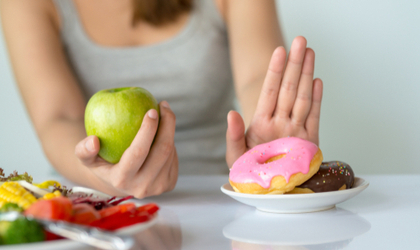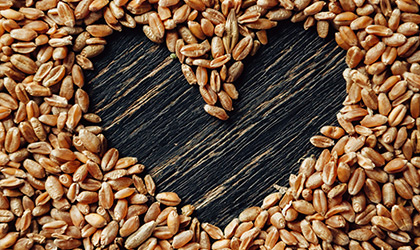
The notion that exercise works wonders for health and wellbeing isn’t anything new. It’s widely accepted that building up a sweat delivers far-reaching physical and emotional benefits: it can make you feel happier, it can increase your energy levels, it can support cognition, it can help with weight loss, and it can nourish muscles and bones. But that’s not all; empirical evidence consistently points to exercise bolstering liver health, too. You see, this major organ doesn’t fair too well with a sedentary lifestyle. Besides taking it easy on the tipples and watching your waistline, moving your body regularly is one of the best things you can do for your liver.
How does exercise affect liver health?
Obesity can manifest fat molecules which accumulate in liver cells, resulting in inflammation and damage to the surrounding tissue. Fortunately, weight loss seems to have an overwhelmingly positive impact on liver health: the more weight you lose, the healthier your liver becomes. It’s a pretty simple formula. With the help of regular exercise, you can maintain a healthy weight and support your liver health.
Beyond this, a number of clinical trials purport that both resistance and aerobic training have shown immense promise in directly reducing hepatic fat (a build-up of fat in the liver) independent of weighti. Indeed, among obese individuals, research suggests those leading inactive lifestyles are much more likely to develop a liver condition compared to their weight-matched counterparts deemed to be physically activeii. The mechanisms through which physical activity diminishes liver fat are still largely unknown. Scientists surmise it could result from improving insulin resistance, which reduces the amount of free fatty acids circulating in the liveriii.
What type of exercise?
Moving your body in any shape or form will benefit your liver. But if you truly want to reboot your liver health, the type of physical activity is well worth considering. According to scientific data, performing a combination of aerobic exercise and resistance training several times a week will deliver the best results for your liveriv. This exercise regimen appears to diminish the amount of fat stored in liver cells, irrespective of whether weight loss transpires. In a 4-week study, obese individuals who trained for 30-60 minutes, five days per day, saw an impressive 10% loss in liver fat, even though their weight remained unchangedv. Despite being more anaerobic than aerobic, high-intensity interval training (HIIT) is also widely known to support a healthy liver. In another study, participants shed a whopping 39% of their liver fat after a 12-week HIIT programmevi. Added bonus: performing HIIT means you’ll only need to spend 30 minutes in the gym, so you can forget slogging away over a treadmill for an hour. It’s effective and efficient. Learn more about key exercises to keep your body healthy here
Although it may be more focused and briefer than aerobic activity, resistance training can still lead to a fall in liver fat levels. One analysis on 82 subjects, aged 20-65, suffering from a liver condition, found that 3-months of resistance training – 40 minutes, three times a week – significantly increased participants liver healthvii. The study also discovered that gym training triggered a notable decline in blood cholesterol levels, which further benefited the liver. With this in mind, be sure to add resistance training to your liver loving arsenal, too.
Examples of aerobic exercise
-
Dancing
-
Tennis
-
Cycling
-
Hiking
-
Swimming
-
Brisk walking
-
Jogging or running
Examples of resistance training
-
Using free weights – dumbbells, kettlebells, and barbells
-
Using weighted machines
-
Using medicine balls
How much?
Though the intensity of your workouts is, of course, important, research suggests exercising consistently takes precedence. In an Italian study, those who trained twice per week for a year experienced similar reductions in liver fat, regardless of whether their workouts were considered low-to-moderate or moderate-to-high intensityviii. So, when it comes to nourishing your liver, the take-home message is this: exercise regularly. Find something that jives with you and stick to it. You don’t want to start seeing physical activity as a ‘chore’; this will only make you to veer off your workout routine. Because commitment is so essential for liver health, make a concerted effort to choose a form of exercise that excites you. Maybe it’s the thought of running in green spaces that galvanises you to put your trainers on? Perhaps it’s building up a sweat with your friends in a Zumba class that maintains your motivation? Or, it could be having a natter with your Nordic walking group that compels you to leave the house? Whatever it is, cherry-pick your ‘thing’ and dive straight in. To keep your liver and the rest of your body in tiptop shape, the NHS recommends adults should do at least 150 minutes of moderate activity and 2 strength-training sessions every weekix.
Top tips
Kick starting a new exercise routine can seem daunting, but it can feel especially challenging if you’re overweight or obese. However, trust us when we say it’s worth the sweat and tears. Physical activity won’t only help you slim down and support your liver, but it will also improve your mood and change the way you feel about yourself. Always start off exercising gradually; begin with 20 to 30 minutes of low-intensity activity daily, and then gently increase the intensity and length of your workout sessions. As aforementioned, always choose a workout you enjoy! Remember, the fact you’re exercising is much more important than the type of activity. Finally, give yourself credit for sticking to a new exercise regimen; it’s a huge achievement.
Anything else?
Sadly, exercise alone won’t deliver the results your liver needs. Physical activity is best partnered with optimised nutrition. To unlock the transformative power of your workout routine, you should eat a balanced and colourful diet – one that’s brimming with plenty of whole grains, fruits, veggies, protein, fibre, and healthy fats. Be sure to drink enough water, too, as this will support the function of your liver. Finally, it pays to be wary of sneaky liver-health saboteurs; foods high in sugar, salt, and saturated fat will only hijack your attempts to nourish your liver. Alcohol also falls into this category. Watch that you don’t consume more than 14 units every week (the equivalent to 6 pints of beer or 7 medium glasses of wine). Oh, and don’t ‘save up’ your weekly allowance, either. Binge drinking doesn’t bode well for your liver; the Friday nights will soon add up and your body won’t be happy. Learn more about the best foods to eat for liver health.
References:
-
NHS.UK. (2019). Non-alcoholic fatty liver disease (NAFLD). Available online: https://www.nhs.uk/conditions/non-alcoholic-fatty-liver-disease [Accessed 6 May. 2019].
-
Eckard. C., Cole. R., Lockwood. J., Torres. D., Williams. C., Shaw. J. & Harrison. S. (2013). Prospective histopathologic evaluation of lifestyle modification in nonalcoholic fatty liver disease: a randomized trial. Therapeutic Advances in Gastroenterology. ;6(4), 249-259.
-
Pälve. K., Pahkala. K., Suomela. E., Aatola. H., Hulkkonen. J., Juonala. M., Lehtimäki. T., Rönnemaa. J., Viikari. J., Kähönen. M., Hutri-Kähönen. N., Telama. R., Tammelin. T. & Raitakari. O. (2017). Cardiorespiratory Fitness and Risk of Fatty Liver. Medicine & Science in Sports & Exercise. ;49(9), 1834-1841.
-
van der Windt. D.J., Sud. V., Zhang. H., Tsung. A. & Huang. H. (2018). The Effects of Physical Exercise on Fatty Liver Disease. Gene expression. ;18(2), 89–101.
-
Taniguchi. H., Tanisawa. K., Sun. X., Kubo. T. & Higuchi. M. (2016). Endurance Exercise Reduces Hepatic Fat Content and Serum Fibroblast Growth Factor 21 Levels in Elderly Men. The Journal of Clinical Endocrinology & Metabolism. ;101(1), 91-198. Zelber-Sagi. S. (2014). Effect of resistance training on non-alcoholic fatty-liver disease a randomized-clinical trial. World Journal of Gastroenterology. ;20(15), 4382.
-
Sullivan. S., Kirk. E., Mittendorfer. B., Patterson. B. & Klein. S. (2012). Randomized trial of exercise effect on intrahepatic triglyceride content and lipid kinetics in nonalcoholic fatty liver disease. Hepatology. ;55(6), 1738-1745.
-
Cassidy. S., Thoma. C., Hallsworth. K., Parikh. J., Hollingsworth. K., Taylor. R., Jakovljevic. D. & Trenell. M. (2015). High intensity intermittent exercise improves cardiac structure and function and reduces liver fat in patients with type 2 diabetes: a randomised controlled trial. Diabetologia. ;59(1), 56-66.
-
University of Haifay. (2015, July 27). Good news for people suffering from fatty liver disease: Resistance training can help. ScienceDaily. Available online: https://www.sciencedaily.com/releases/2015/07/150727093349.htm [Accessed 7 May. 2019].
-
Balducci. S., Cardelli. P., Pugliese. L., D’Errico. V., Haxhi. J., Alessi. E., Iacobini. C., Menini. S., Bollanti. L., Conti. F., Nicolucci. A. & Pugliese. G. (2015). Volume-dependent effect of supervised exercise training on fatty liver and visceral adiposity index in subjects with type 2 diabetes The Italian Diabetes Exercise Study (IDES). Diabetes Research and Clinical Practice. ;109(2), 355-363.
-
NHS.UK. (2019). Exercise. Available online: https://www.nhs.uk/live-well/exercise [Accessed 7 May. 2019].
You Might Also Like

Keri
Keri Filtness has worked in the Nutrition Industry for 19 years. She is regularly called upon for her professional comments on health and nutrition related news. Her opinions have been featured by BBC3, Prima, Vitality, The Mirror, Woman’s Own and Cycling Weekly, amongst others. She has also worked one to one with journalists, analysing their diets and health concerns and recommending changes and additions, where appropriate.
View More



